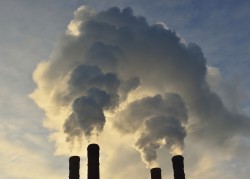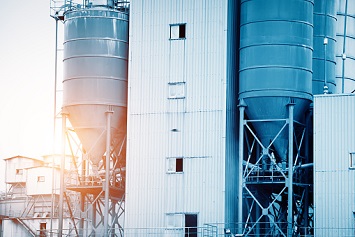The EPA has completed its residual risk and technology review (RTR) of the Clean Air Act’s National Emissions Standards for Hazardous Air Pollutants (NESHAP) for the Portland Cement manufacturing sector.
Based on the RTR, the Agency has concluded that no new emissions standards are needed to protect public health with an ample margin of safety and also that emissions reductions achievable by cost-effective technological developments are not sufficient to warrant changes to the standards. Accordingly, the RTR final rule leaves the existing major provisions of the Portland Cement NESHAP intact. The rule does include 10 corrections and clarifications, which, says the Agency, will improve monitoring, compliance, and implementation of the NESHAP.
Kilns and Incinerators
The EPA initially promulgated the Portland Cement NESHAP in June 1999. Over the next 17 years, the Agency amended the regulation 10 times (not including the current set of amendments). Much of this regulatory activity resulted from a difficult legal debate over whether cement kilns that combust waste are subject to the NESHAP or subject to the Resource Conservation and Recovery Act (RCRA) because they are, in fact, incinerators. The courts eventually ruled that cement kilns that burn solid or hazardous waste are incinerators, regardless of the amount of useful product they produce; these sources are not included in the 91 facilities, both major and area sources, subject to the NESHAP.

Energy-Intensive Process
The EPA describes Portland Cement manufacturing as an energy-intensive process in which cement is made by grinding and heating a mixture of raw materials, such as limestone, clay, sand, and iron ore, in a rotary kiln. Emissions sources are process units that include but are not limited to the kiln, clinker cooler, raw mill system, finish mill system, raw mill dryer, raw material storage, clinker storage, finished product storage, conveyor transfer points, bagging, and bulk loading and unloading systems. The main source of air toxics is the kiln.
Pollutants regulated under the NESHAP are particulate matter (PM) as a surrogate for nonmercury hazardous air pollutant (HAP) metals, total hydrocarbons (THC) as a surrogate for organic HAP other than dioxins and furans (D/F), organic HAP as an alternative to the limit for THC, mercury, hydrochloric acid (HCl) (from major sources only), and D/F expressed as toxic equivalents (TEQs).
Amendments
The final RTR rule includes the following 10 amendments:
- Correction to the paragraph in the reporting requirements that mistakenly required that affected sources report their 30-operating-day rolling average for D/F temperature monitoring;
- Correction to a provision that required facility owners or operators to keep records of both daily clinker production and kiln feed rates;
- Clarification that the submittal dates for semiannual summary reports required under 40 CFR 63.1354(b)(9) are 60 days after the end of the reporting period;
- Resolution of conflicting provisions that apply when a sulfur dioxide (SO2) continuous parametric monitoring system is used to monitor HCl compliance;
- Clarification that the requirement in 40 CFR 63.1349(b)(1)(vi) applies only to kilns with inline raw mills;
- Clarification that the 40 CFR part 63, subpart LLL D/F standards were developed based on toxic equivalency factors (TEFs) developed in 1989, as referenced in the TEQ definition section of the rule (40 CFR 63.1341);
- Clarification of the performance test requirements for affected sources that have been idle through one or more periods that required a performance test to demonstrate compliance;
- Removal of 40 CFR 63.1343(d) and Table 2, which contain emissions limits that were applicable before September 2015;
- Revision of Equation 18 of the rule to include a missing term; and
- Revision of 40 CFR 63.1350(g)(4) to say “record” instead of “report.”
Compliance
Because these revisions provide only corrections and clarifications to the current rule and do not impose new requirements on the industry, the EPA has made them effective upon the July 25, 2018, promulgation date, when compliance is also required.
The amendments were published in the July 25, 2018, Federal Register (FR).

